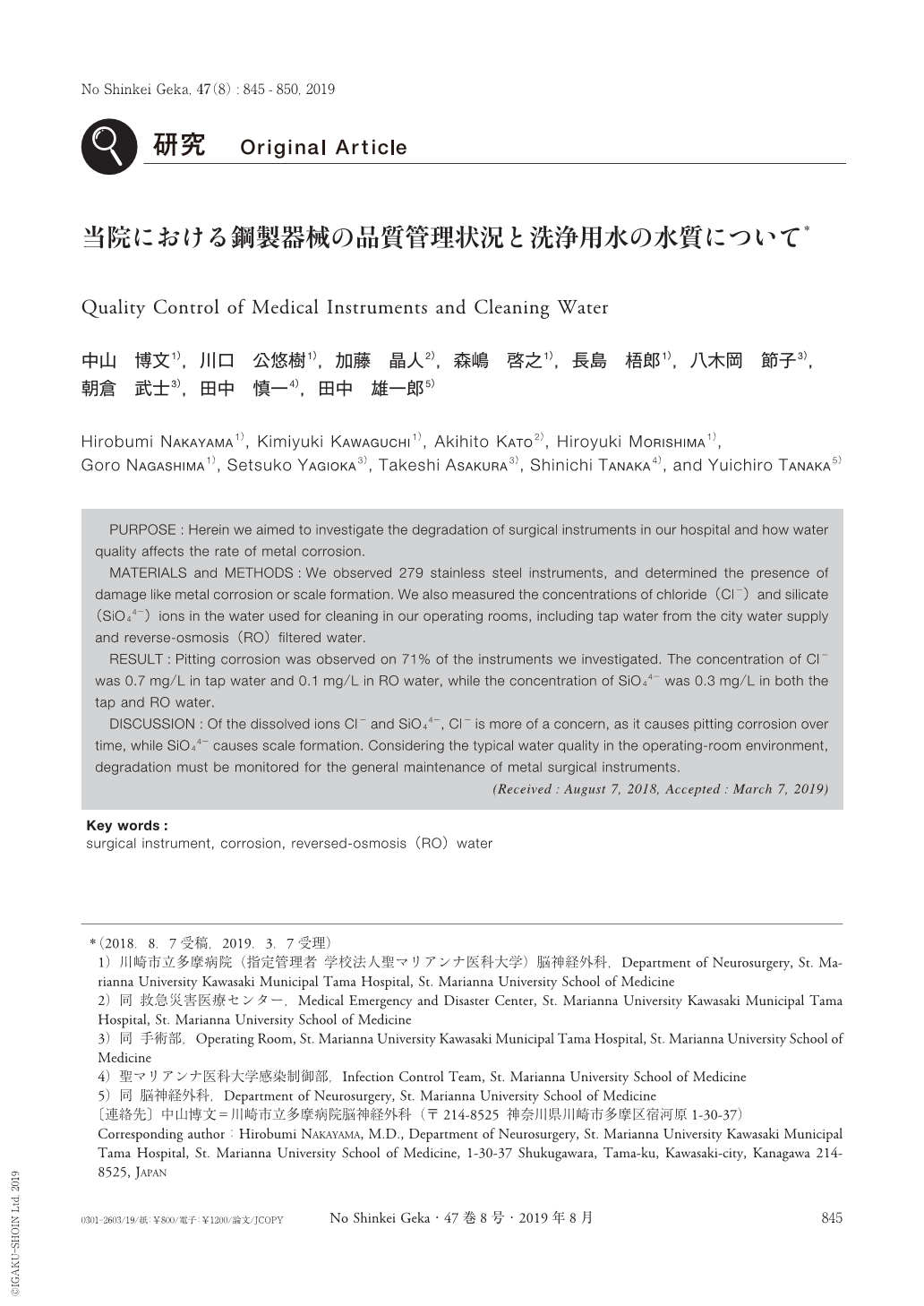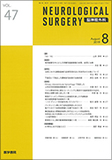Japanese
English
- 有料閲覧
- Abstract 文献概要
- 1ページ目 Look Inside
- 参考文献 Reference
Ⅰ.はじめに
医療機器保全管理の最終目的が患者の安全確保であることは論を俟たない.手術器械の不具合は施術効率を落とし,施術側にもストレスがかかり,不意の臓器損傷,破損による体腔内への落下,付着物による感染といった周術期トラブルにも影響が起こりうる.
現在,医療機関での医療機器保守は医療法第6条(平成18年6月公布)に定められた義務であるが,明確に示された基準がないのも現状である.鋼製器械の保守は洗浄滅菌といった再生処理が中心となるが,これら管理状態についての報告は,実験研究的な報告を除いて見当たらない.
われわれは手術用鋼製器械につき,検視下での損傷状況の調査を実施した.鋼製小物の肉眼的な破損や変形のほかにも,金属腐食に影響するであろう処理水の水質検査についても併せて行ったので報告する.
PURPOSE:Herein we aimed to investigate the degradation of surgical instruments in our hospital and how water quality affects the rate of metal corrosion.
MATERIALS and METHODS:We observed 279 stainless steel instruments, and determined the presence of damage like metal corrosion or scale formation. We also measured the concentrations of chloride(Cl−)and silicate(SiO44−)ions in the water used for cleaning in our operating rooms, including tap water from the city water supply and reverse-osmosis(RO)filtered water.
RESULT:Pitting corrosion was observed on 71% of the instruments we investigated. The concentration of Cl− was 0.7mg/L in tap water and 0.1mg/L in RO water, while the concentration of SiO44− was 0.3mg/L in both the tap and RO water.
DISCUSSION:Of the dissolved ions Cl− and SiO44−, Cl− is more of a concern, as it causes pitting corrosion over time, while SiO44− causes scale formation. Considering the typical water quality in the operating-room environment, degradation must be monitored for the general maintenance of metal surgical instruments.

Copyright © 2019, Igaku-Shoin Ltd. All rights reserved.


